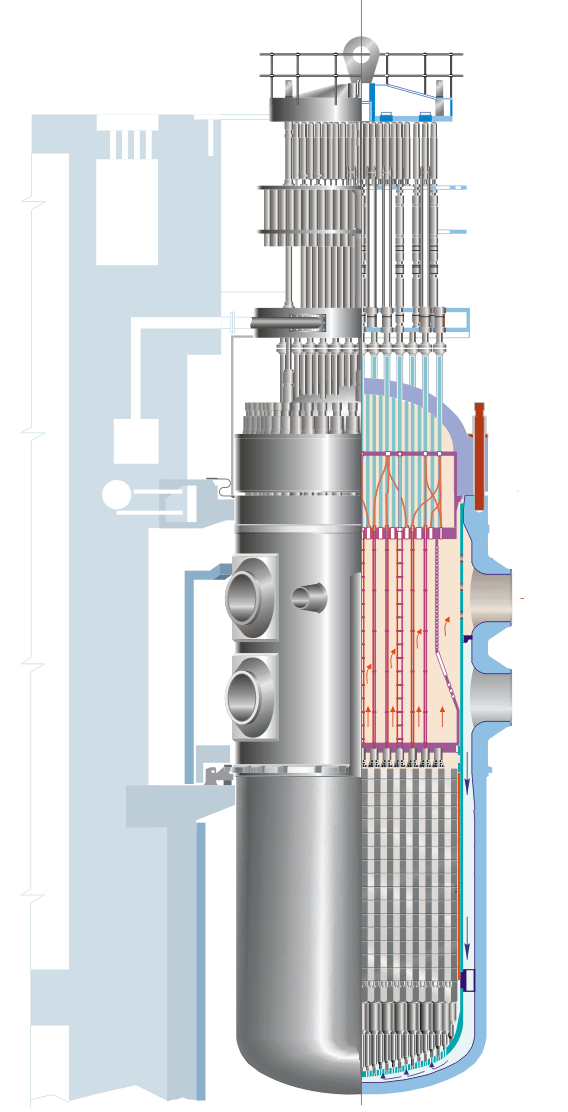Wwer-1000-scheme 2.png

Part 2 of 2 Parts (Please read Part 1 first)
The entire WWER is enclosed in a massive steel shell and hermetically sealed. A concrete containment building contains the reactor and containment vessel is strong enough to contain the pressure of an explosion of the core.
The containment zone in a WWER is an advanced safety system. It is designed to withstand the enormous pressure in the reactor’s core in the event of an emergency. It is built to be able to survive an earthquake that registers eight on the Richter Scale, one hundred and twenty mile an hour winds, powerful explosions and a four-hundred-ton plane crashing into the reactor at four hundred and twenty miles per hour.
There is a special sprinkler system in the WWER that can spread boronated chemicals in the containment zone which reduces neutron flow and slows down nuclear reactions. This system is one of the few systems that must have electrical power to operate. Emergency generators are located some distance from the reactor itself to protect them in case of a serious emergency.
Four passive systems are installed in the containment zone of a WWER that can function without human intervention or electrical power. First, there are tanks of boric acid that can absorb neutrons which will stop nuclear reactions. The tanks are located above the reactor and the valves can open even if power to the building fails.
Second, passive coolant systems in the containment zone absorb extra heat and transfer it outside of the zone. Third, hydrogen “re-combiners” prevent hydrogen from building up to dangerous levels which protects the containment zone from internal explosions. And finally, there is a “melt-trap” below the reactor that can trap any nuclear fuel that leaks out of the core in a meltdown. It is composed of ferrous oxide and boric acid which will stop any chain reactions from occurring.
Currently, Rosatom, the Russian-owned nuclear company, is working on fault tolerant fuel which will reduce the possibility of uncontrolled chain reactions and will also increase the efficiency of the reactor. The Modernized International Reactor (MIR) is a version of the twelve hundred megawatt WWER is being designed to satisfy the requirements of the European Union.
Russia is also working on a WWER-600 version of the WWER twelve hundred WWER for sale to smaller markets. The first one of these will be built by 2030 for the Kola Nuclear Power Plant in northwest Russia.
Russia recently installed two WWER 1000 reactors based on an update of an older design in Taiwan. This power plant has ninety four percent of its system automated which means that the plant can run autonomously without needing human intervention most of the time. They still have five operators in the control room for safety.
All these safety features are impressive but, unfortunately, they are only as good as the integrity of the components and the competence and conscientiousness of those who constructs the reactor.